- Home
- Ramachandra Guha
Gandhi Before India Page 2
Gandhi Before India Read online
Page 2
These diverse landscapes and human beings are given meaning by their relation to Mohandas K. Gandhi. It is his journey that we follow, from Gujarat to London to Natal and the Transvaal and then back to Gujarat, and on to a thousand places beyond. It is by tracing his steps and recalling his actions that we encounter these many landscapes and this range of remarkable people.
There are some striking resemblances between the central character in this story and his counterpart in the great Indian epic, the Ramayana. The hero of that story, Lord Ram, also travels long distances, sometimes willingly, at other times unwillingly. He too spends long periods in exile, and has a loyal and very supportive wife, whom (like Gandhi) he does not always treat with the respect and understanding she deserves. He is also a man of high moral character, who occasionally entertains dark and dangerous thoughts. Both Gandhi and Ram have powerful adversaries, who are not without a certain appeal of their own. Both men could not have done what they did, one in myth and the other in reality, without the self-effacing support of very many others. And both have enjoyed a vigorous and contentious after-life.
But one should not push the parallels too far. The morals that the Ramayana seeks to establish are cultural and familial – how to deal with one’s wife, for example, or with one’s father or step-mother, or how to uphold the dharma of caste and community. In the case of our own epic, the morals are more explicitly social and political. We are asked to choose between rule by foreigners and self-rule, between violence and non-violence, between the aggressive proselytizing of one’s faith and the loving understanding of another, between a respect for natural systems and an arrogant disregard of them. Sometimes, pace the Ramayana, the ‘right’ choices may in fact involve a reversal of the traditional order, as in the abolition of Untouchability or the granting of equal rights to women.
That said, in both epics the morals are secondary. What really matters are the stories, the richness of the human experience they contain, the fascination of the central character and of those who worked with or fought against him.
The narrative of the current book begins with Gandhi’s birth, in October 1869, and ends with his departure from South Africa in July 1914. Much of this time was spent as a lawyer and activist in Natal and the Transvaal. Gandhi’s biographers have tended to skip hastily over this phase of his life, treating it as a prelude to his later, apparently more important, work in India. They have chosen to consider his life in teleological terms, with his work in South Africa preparing the way for his more important work in his homeland.5
Haste and teleology – these twin temptations – do injustice to both man and place. As social reformer, popular leader, political thinker and family man, Gandhi was fundamentally shaped by his South African experience. In turn, he had a profound impact on the history of that continent, with his ideas and attitudes influencing later struggles against racism.
When Gandhi first landed in Durban in 1893, South Africa was very much a nation-in-the-making. Its separate colonies governed themselves. Some, like Natal, were ruled by British expatriates; others, like the Transvaal, were ruled by Afrikaners of largely Dutch descent (then known as ‘Boers’). In the only part of Africa with a European climate, the colonists set about creating a homeland for themselves. There were, of course, very many Africans who had lived here from long before the white man arrived. But through a series of wars and conquests they were being thoroughly subjugated.
Between the dominant Europeans and the subordinated Africans lay the Indians. They had come in as labourers, imported to work in the mines and sugar plantations, and on the railways. There were also a significant number of Indian traders, and a few professionals. By the time of Gandhi’s arrival there were about 50,000 Indians in this part of the world, a majority of them in Natal.
Gandhi lived for long periods in both Natal and the Transvaal – roughly a decade in each. Natal was on the coast, dominated by the British, with an economy founded on sugar and coal. Transvaal was inland, ruled by the Boers, and going through a massive boom due to the discovery of gold. The material riches, relative underpopulation and glorious climate of both colonies was attracting settlers from Europe as well as Asia. Gujaratis, Tamils and Hindi-speakers came across the Indian Ocean; Anglicans, Catholics, Jews and Theosophists via the Atlantic. These were all people in search of more – far more – material prosperity than they could ever find at home.
The great rush to colonize and claim South Africa took place at roughly the same time as the westward expansion of the United States. The attractions of open territory, of fabulous natural wealth (and natural beauty), of escape from an over-populated and class-ridden Old World – these were what the two processes of economic migration had in common. But whereas the European colonists of western America had merely to deal with the natives, their counterparts in southern Africa had this additional complicating factor – the presence of Indians from India, who were not indigenous but emphatically not European either.
It was in this strange scenario that Gandhi came to acquire, and practise, his four major callings – those of freedom fighter, social reformer, religious pluralist and prophet. In fact, an early (and now largely forgotten) associate of his once identified as many as seventeen identities that Gandhi bore in the years he spent outside India. ‘South Africa is the grave of many reputations,’ wrote this man, adding: ‘It has certainly been the birth-place of a few, and one such is that of Mohandas Karamchand Gandhi. Dewan’s son, barrister, stretcher-bearer, pamphleteer, cultured thinker, courteous gentleman, manual labourer, nurse, teacher, agitator, propagandist, sterling friend, no man’s enemy, ex-convict, sadhu, chosen leader of his people, and arch passive-resister.’6
Of these seventeen identities, the last has had the greatest impact on the history of the world. Gandhi gave the name ‘satyagraha’ (or truth-force) to the techniques of mass civil disobedience he invented in South Africa and later used in India, and which his followers or admirers used in other countries. Before Gandhi, those discontented with their superiors had either petitioned their rulers for justice or sought to attain justice by means of armed struggle. The distinctiveness of Gandhi’s method lay in shaming the rulers by voluntary suffering, with resisters seeking beatings and imprisonment by breaking laws in a non-violent yet utterly determined manner.
In 1916, not long after Gandhi left South Africa, a publisher in a small town in central India brought out a history in Hindi of the satyagrahas Gandhi had led. The book was presented as ‘the story of that heroic battle, which was the first of its kind in the history of the world’, a battle where ‘there were no guns and bombs and cannons’ (and ‘no shells thrown by aeroplanes’ either), a battle which showed that ‘strength of character can conquer any other kind of strength’. The publisher hoped the reader would ‘swell with pride’ as he learnt of how ‘coolies and labourers’ in the diaspora had ‘shamed and shocked educated elites [in India] with their resolution and spirit.’7
At this time, Gandhi had been back barely a year in India. The British were solidly in control of the subcontinent. Still, what might have sounded hyperbolic in 1916 may seem more reasonable a century later. For the Indian freedom struggle, the civil rights movement in the United States, the civic resistance to Communism in Eastern Europe and China (including Tibet), the ongoing protests against military dictators in Burma and the Middle East, have all taken some or much inspiration from techniques of protest first forged by Gandhi in the Transvaal. The colossal and still expanding influence of satyagraha mandates a closer attention to the precocious protests of Indians in South Africa, to aid a deeper understanding of Gandhi in his time, and of his still unfolding legacy in ours.
Rather than rely on Gandhi’s own recollections (contained in two books published a decade-and-a-half after he left South Africa), I have here examined his early satyagrahas through the prism of contemporary documents. These letters, speeches, newspaper accounts, court cases and government reports give a more immediate sense of how Gandhi for
mulated his ideas of civil disobedience, of how he designed its methods and techniques, and how he mobilized people to court imprisonment. From these varied sources we can track how the protests unfolded and what forms they took, who followed Gandhi (and why) and who opposed him (and why), and where the funds for sustaining the resistance he led were coming from. The historical reconstruction of these first satyagrahas also throws a sharp light on a crucial period of South African history, as once separate colonies came together in a territorial Union that consolidated white sentiments and prejudices against the hopes and aspirations of the darker races.
The political Gandhi may be illuminated from more angles than his own. So also the personal Gandhi. Here too, the South African experience was fundamental and formative. Most Indians of Gandhi’s generation worked and died in the same town or village in which they were born. In their everyday lives, they mostly met and spoke with people who had the same mother tongue and the same ancestral faith as they. By coming to South Africa, Gandhi was taken out of this conservative, static world into a country still in the process of being made. Durban and Johannesburg, the two cities where he lived and worked, were attracting migrants from Europe and Asia, and from other parts of Africa. In this heterogeneous and ever-changing society, Gandhi forged enduring friendships with individuals of ethnic and religious backgrounds very different from his own.
Strikingly, perhaps even tragically, the friends and associates of Gandhi’s South African years are largely absent from the historical record. This is due to a combination of factors – an excessive reliance on the Collected Works; the tendency to treat the life before India as a prelude to the real story rather as having an integrity of its own; and the tendency among biographers and hagiographers to magnify the role and personality of their main subject. Most Indians – and, following Attenborough’s film, many non-Indians too – are moderately well acquainted with the colleagues and critics of the mature Gandhi. Yet they know very little about those who worked with him in South Africa. Here, his closest friends outside his family were two Hindus (a doctor-turned-jeweller and a liberal politician respectively); two Jews (one a journalist from England, the other an architect originally from Eastern Europe); and two Christian clergymen (one a Baptist, the other an Anglican).
These six men were, so to speak, the South African analogues of Gandhi’s famous colleagues in the Indian freedom struggle – Jawaharlal Nehru, Vallabhbhai Patel, Subhas Chandra Bose, Madeleine Slade (Mira Behn), C. Rajagopalachari, Maulana Azad, et al. They are much less recognized (in some cases, unrecognized), although their impact on Gandhi’s character and conduct may have been even more decisive, for they came into his life when he was not yet a great public figure or ‘Mahatma’ – as he was in India – but a struggling, searching activist.
The letters to and by these friends of his South African period illuminate Gandhi’s anxieties, struggles and relationships in rich and often unexpected ways. Yet these materials have, remarkably, not been consulted by previous biographers. This may only be because they are not printed in the Collected Works, but rest in archives in New Delhi and Ahmedabad, in Pretoria and Johannesburg, in London and Oxford, and even, in one case, in the Israeli port town of Haifa.
In 1890, in 1900, in 1910, the majority of those who lived in South Africa were Africans. Sometimes, as sharecroppers and labourers, they worked for their white masters. In more remote areas, they lived away from them as herders and hunters. However, in both city and countryside, they rarely came into daily competition with the British or the Boers. There were few African traders, and still fewer African doctors or lawyers.
Because they were better educated and better organized, some Indians could more actively challenge the facts of white domination. The rulers responded by changing the laws: by disallowing Indians from living in or opening shops in certain locations, from moving from one province to another, from seeking admission to the best schools, from importing brides from India with whom they could raise families and thus bring more Indians into the workforce. In so far as these restrictions were later extended more thoroughly to the Africans, the Indians should really be considered to be among apartheid’s first victims. And in so far as it was Gandhi who led the first protests against the racial laws, he should really be more seriously recognized as being among apartheid’s first opponents.
Gandhi’s struggles in Natal and the Transvaal also shaped nationalist politics in India, as well as imperialist agendas in Great Britain. From one vantage point, Gandhi was merely a community organizer. However, since his work had an impact on the politics of three continents, it had much larger consequences. In an age when even the telephone had not come into common use, when the fax and the internet lay many decades in the future, Gandhi’s struggles thus carried connotations of what is now known as a ‘global social movement’.
Gandhi’s South African campaigns were an early example of ‘diasporic nationalism’, a nationalism later practised assiduously by (among others) Irishmen in Boston, Jews in New York, Palestinians in Tunis and Sikhs in Vancouver, who have likewise struggled both for civil rights in the land they happened now to live in and for freedom for their compatriots in the land they had left behind.
The predicament of Indians in South Africa in Gandhi’s day also anticipated the predicament of Muslims in Europe and of Hispanics and Asians in North America today. Should immigrants be allowed to practise their own faith and speak their own language? How can they combat discrimination in school and in the workplace? What forms of political organization are best suited to their needs and hopes? What are the rights and responsibilities of the host community and the migrants respectively, in maintaining social peace and democracy?
These questions are as urgent in our time as they were between 1893 and 1914, the years that Mohandas Gandhi lived in Natal and the Transvaal. Gandhi’s African years show how the first phase of globalization, with its willing and sometimes unwilling migration of groups and communities, produced difficulties and discontents not dissimilar to those produced by our own, even more globalized world.
1
Middle Caste, Middle Rank
Gandhi’s caste, the Banias, occupied an ambiguous place in the Hindu social hierarchy.1 Above them lay the Kshatriyas and the Brahmins, traditionally rulers and priests. These were the ‘upper’ castes, so called because of the temporal and spiritual power they exercised. Below the Banias lay the Sudras and the Untouchables, who worked as farm labourers, artisans and scavengers. These were the ‘lower’ castes, so called because of the stigma attached to their traditional occupations, and because of their dependence, for instruction and occasionally for succour, on those above them.
The Banias were placed in the third stratum. They were, in more senses than one, middlemen. Their traditional occupation was trade and moneylending. They lent money to peasants and labourers, but also to kings and priests. They ran shops and stores that catered to all sections of society. The services they provided were indispensable; perhaps for this reason, the Banias were not trusted very much by those they served. In popular folklore, they were cunning and avaricious. They were said to maintain two sets of accounts: one written in a legible script and intended for the tax official; and a second, representing their real transactions, written in code. As one Hindi proverb had it, even God himself could not decipher the Banias’ handwriting.
The Bania was a survivor, adept and adaptable, possessing the skills and instincts to see him through periods of adversity and political instability.2 The Banias of Gujarat, writes their modern historian, were ‘renowned for their smooth tongue’ (in contrast to the arrogance of the Brahmin and the brashness of the Kshatriya). They cultivated ‘a soft and persuasive way of speech’ while extolling the quality of the goods they sold. ‘They would always try to avoid a confrontation with customers and clients, backing down when necessary’. The code of the caste stressed ‘hard work and frugal living’. Thus ‘Baniyas were taught never to be idle, and they had in consequence a r
eputation for being a restless people, irritated when there was no work at hand’. 3
In the political economy of medieval and early modern India, Banias played a crucial role. Agriculture, the mainstay of subsistence, required them to provide credit to peasants in periods of distress and scarcity. Warfare, the mainstay of politics, required them to advance money to, and hoard jewels for, chiefs seeking to expand or defend their territories.4
Gandhi’s native region, Kathiawar (also known sometimes as ‘Saurashtra’), is an ear-shaped peninsula some 23,000 square miles in area, in the central part of the western Indian state of Gujarat. Kathiawar has a coastline that extends over 600 miles, with many deep harbours. It has a long history of trade, both up and down the west coast of India, and with the Middle East and Africa. By one estimate, the peninsula’s sea trade in the late sixteenth century was of the order of Rs 30 million a year. The items bought and sold included agricultural commodities, spices, jewels, arms and, sometimes, slaves. The transport, loading and unloading of these materials was done by labourers of the Sudra castes. However, their purchase, storage and sale was undertaken largely by the Banias.5
The peninsula was one of the first centres of urban civilization in the subcontinent. Cities have existed here from Harappan times, more than 3,000 years ago. Through the medieval period, Kathiawar was divided into many small principalities, each requiring a capital city. Dotted with towns small and large, sited on the coast as well as inland, Kathiawar in the late nineteenth century had an urban population of well over 20 per cent. (Elsewhere in the subcontinent, urban settlements accounted for barely 10 per cent of the population.)6

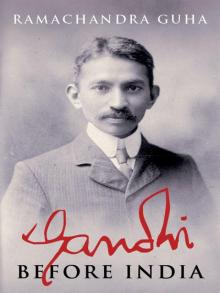 Gandhi Before India
Gandhi Before India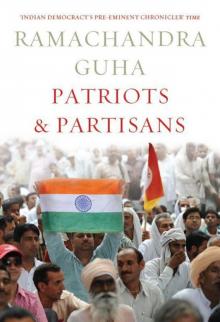 Patriots & Partisans
Patriots & Partisans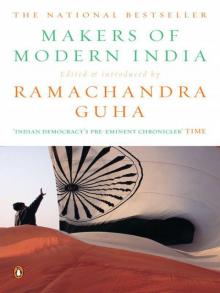 Makers of Modern India
Makers of Modern India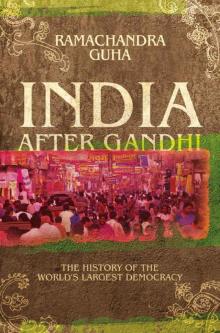 India After Gandhi: The History of the World's Largest Democracy
India After Gandhi: The History of the World's Largest Democracy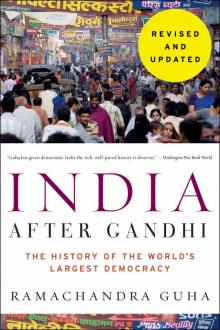 India After Gandhi Revised and Updated Edition
India After Gandhi Revised and Updated Edition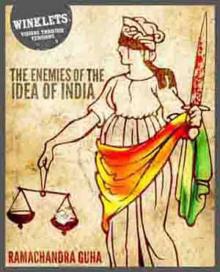 The Enemies of the Idea of India
The Enemies of the Idea of India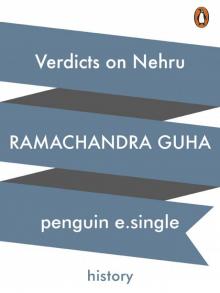 Verdicts on Nehru
Verdicts on Nehru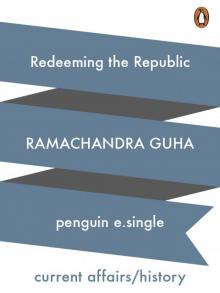 Redeeming the Republic
Redeeming the Republic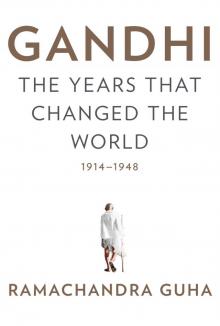 Gandhi
Gandhi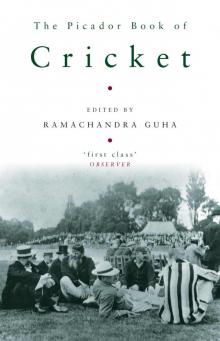 The Picador Book of Cricket
The Picador Book of Cricket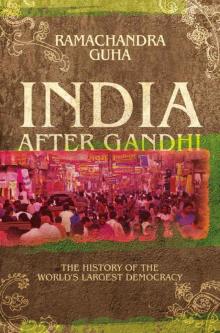 India After Gandhi
India After Gandhi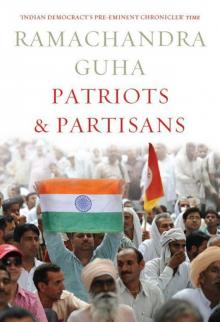 Patriots and Partisans: From Nehru to Hindutva and Beyond
Patriots and Partisans: From Nehru to Hindutva and Beyond